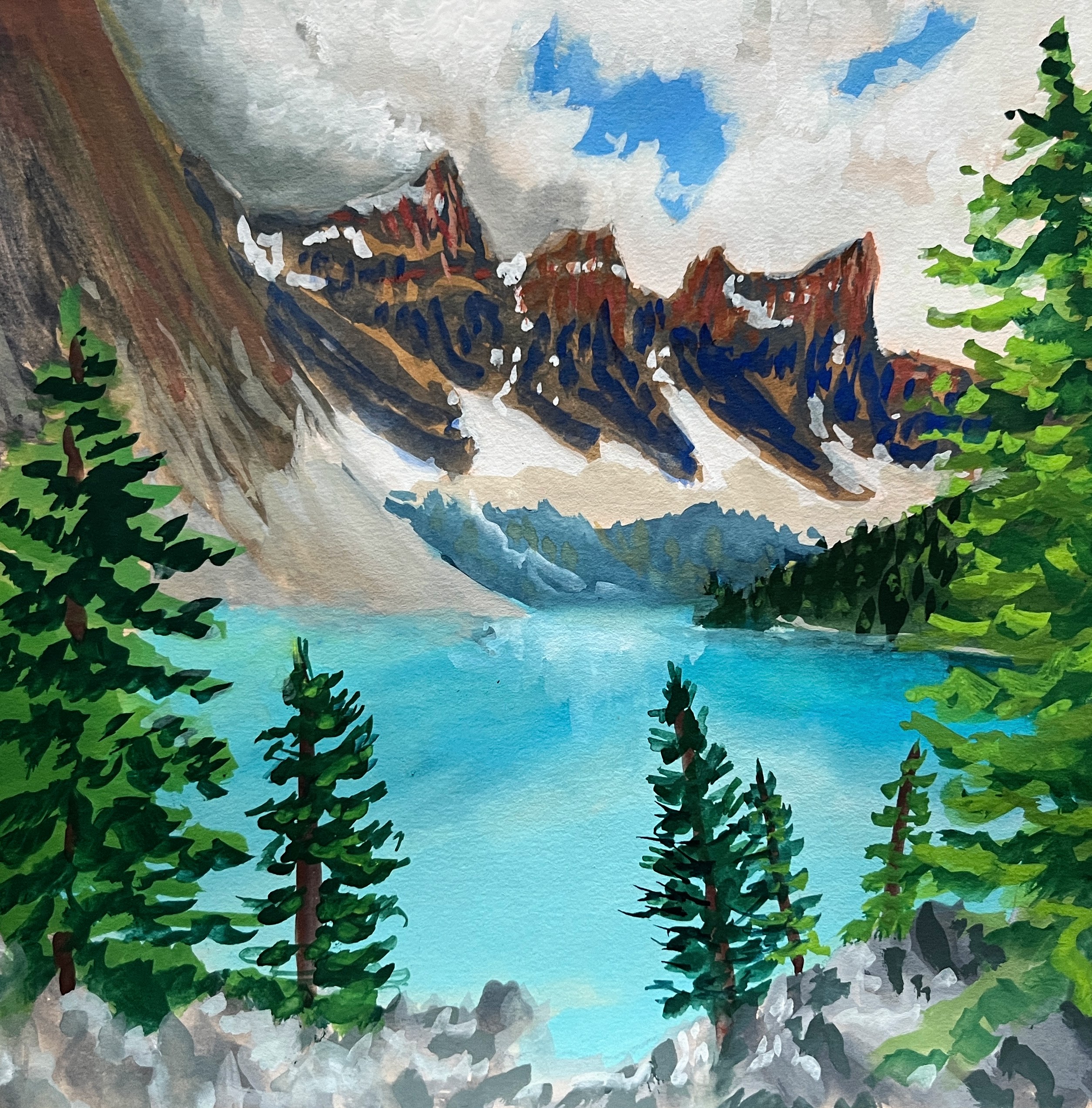I have a new gouache theory.
When I first posted my gouache observations and palette, I noted that some of my favorite watercolor pigments – the transparent, high-tinting ones in the phthalo and quinacridone families – don’t always make good gouache, because gouache is meant to be opaque. Phthalo Green gouache, for example, while thicker and less transparent than the corresponding watercolor, still isn’t opaque, and when you paint it out it can appear patchy. My favorite gouache colors were opaque pigments with more robust coverage: colors like Titanium White (PW6) and Hansa Yellow Light (PY3).
I’ve come to realize, though, that there is still important value to those less-opaque colors, especially the ones with high tinting strength, because they can be great mixing colors. You just need to combine them with another color that has the desired opaque properties. You mix practically everything in gouache with at least a little white, anyway, so it’s not such a big deal that not every color has perfect coverage alone.
I now mentally divide my gouache palette into two categories: base colors and mixing colors.
Read more








